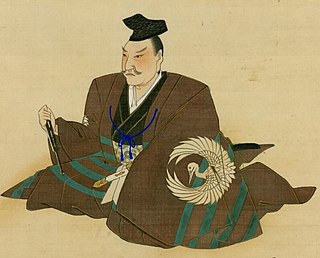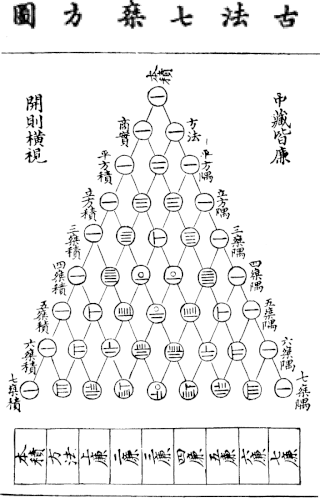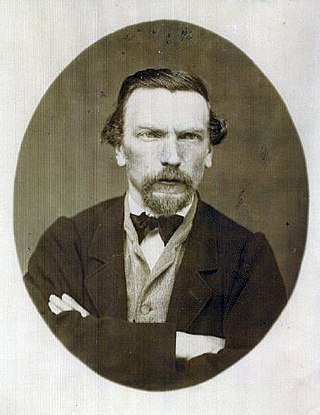
The Kalevala is a 19th-century work of epic poetry compiled by Elias Lönnrot from Karelian and Finnish oral folklore and mythology, telling an epic story about the Creation of the Earth, describing the controversies and retaliatory voyages between the peoples of the land of Kalevala called Väinölä and the land of Pohjola and their various protagonists and antagonists, as well as the construction and robbery of the epic mythical wealth-making machine Sampo.

Japan Standard Time, or Japan Central Standard Time, is the standard time zone in Japan, 9 hours ahead of UTC (UTC+09:00). Japan does not observe daylight saving time, though its introduction has been debated on several occasions. During World War II, the time zone was often referred to as Tokyo Standard Time.
The year 1836 in science and technology involved some significant events, listed below.
The year 1834 in science and technology involved some significant events, listed below.
The year 1783 in science and technology involved some significant events:
The year 1715 in science and technology involved some significant events.
The year 1683 in science and technology involved some significant events.
The year 1671 in science and technology involved some significant events.

Seki Takakazu, also known as Seki Kōwa, was a Japanese mathematician and author of the Edo period.

The Japan Meteorological Agency (JMA) Seismic Intensity Scale is a seismic intensity scale used in Japan to categorize the intensity of local ground shaking caused by earthquakes.

Danske Bank A/S is a Danish multinational banking and financial services corporation. Headquartered in Copenhagen, it is the largest bank in Denmark and a major retail bank in the northern European region with over 5 million retail customers. Danske Bank was number 454 on the Fortune Global 500 list for 2011. The largest shareholder is A.P. Moller Holding connected to the Maersk family.
The year 1896 in art involved some significant events.

Aida Yasuaki also known as Aida Ammei, was a Japanese mathematician in the Edo period.

Yang Hui, courtesy name Qianguang (謙光), was a Chinese mathematician and writer during the Song dynasty. Originally, from Qiantang, Yang worked on magic squares, magic circles and the binomial theorem, and is best known for his contribution of presenting Yang Hui's Triangle. This triangle was the same as Pascal's Triangle, discovered by Yang's predecessor Jia Xian. Yang was also a contemporary to the other famous mathematician Qin Jiushao.

Innocenzo Vincenzo Bartolomeo Luigi Carlo Manzetti was an Italian inventor born in Aosta. Following his primary school studies he went to the Jesuit-run Saint Bénin Boarding School and then on to Turin where he was awarded a diploma in land surveying before returning to Aosta.

Sampo is a 1959 Soviet–Finnish fantasy film based loosely on the events depicted in the Finnish national epic Kalevala. In the United States, it was released in an edited version, The Day the Earth Froze, by American International Pictures as a double feature with Conquered City. This version was later featured in a 1993 episode of Mystery Science Theater 3000.
The Silmarils are three fictional brilliant jewels in J. R. R. Tolkien's legendarium, made by the Elf Fëanor, capturing the unmarred light of the Two Trees of Valinor. The Silmarils play a central role in Tolkien's book The Silmarillion, which tells of the creation of Eä and the beginning of Elves, Dwarves and Men.
Fujita Sadasuke, also known as Honda Teiken, was a Japanese mathematician in the Edo period. He is the author of Seiyō sampō which was published in 1781.
Sampo Generation is a neologism in South Korea referring to a generation that gives up courtship, marriage, and having kids. Many of the young generation in South Korea have given up those three things because of social pressures and economic problems, such as increasing cost-of-living, tuition payments, and affordable housing scarcity. There is also the opo sedae, or "five giving-up generation", which takes the same three and adds employment and home ownership. The chilpo sedae further includes interpersonal relationships and hope, while the gupo sedae extends to physical health and appearance. Finally, the sippo sedae or wanpo sedae culminates in giving up life. The Sampo generation is similar to the Satori generation in Japan.
SM9 is a Chinese national cryptography standard for Identity Based Cryptography issued by the Chinese State Cryptographic Authority in March 2016. It is represented by the Chinese National Cryptography Standard (Guomi), GM/T 0044-2016 SM9. The standard contains the following components: